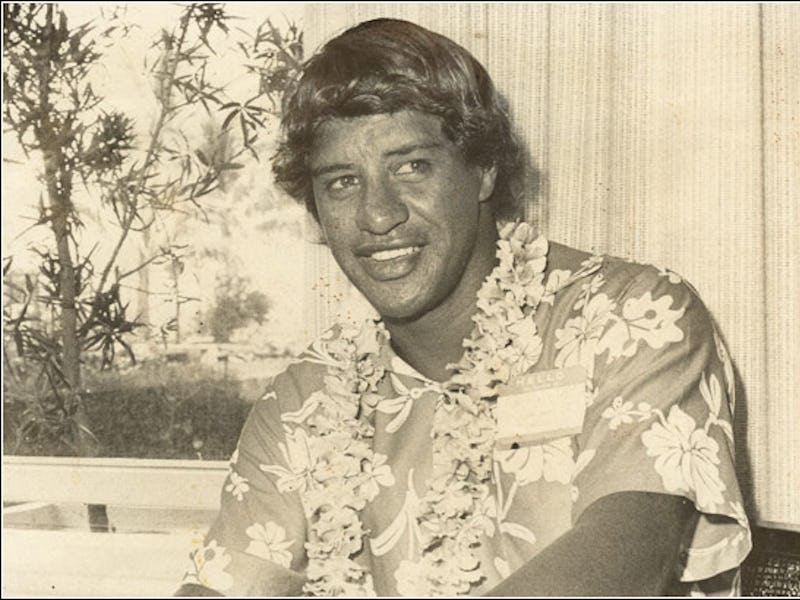Eddie Aikau: The Reason "Eddie Would Go" Is So Meaningful to Hawaiians
Aikau is thought to have rescued some 500 people on the north shore of Oahu.

On this day in 1946, the first lifeguard hired by the city of Honolulu was born, setting the standard for all lifeguards that would follow.
Eddie Aikau was a championship surfer and athlete, but his legacy — marked with a Google Doodle on Saturday in several countries, including the United States — is for his bravery as a lifeguard.
Aikau is thought to have rescued some 500 people on the north shore of Oahu during his time as a lifeguard, without the modern tools like jet skis, drones, or helicopters.
His courage to swim into dangerous waters to save swimmers — or to surf treacherous waves — spawned the phrase “Eddie would go,” which later became the title of a biography on Aikau by Stuart Holmes Coleman.
The Google Doodle posted Saturday honoring the life of Eddie Aikau.
“Eddie would go” might be more recognizable as a phrase you’ll see on bumper stickers and T-shirts that honor Aikau’s spirit. Here’s the origin story of that phrase, from Boardmasters:
In the 1980s, bumper stickers and T-shirts with the phrase “Eddie Would Go” spread around the Hawaiian Islands and to the rest of the world. According to maritime historian Mac Simpson, “Aikau was a legend on the North Shore, pulling people out of waves that no one else would dare to. That’s where the saying came from — Eddie would go, when no one else would or could. Only Eddie dared. The phrase originated during the first Eddie contest. The waves were huge and the conditions were extremely dangerous. While the contest organizers were discussing whether to put it on, Mark Foo looked at the conditions and said, ‘Eddie would go.’ The phrase stuck and the Eddie went!”
Various accounts online, like one at teamsurfgimp.blogspot.com, show how Eddie Would Go has become a philosophy among surfers.
Aikau, was, by many accounts, a quiet, introspective man. He died tragically in the waters where he spent much of his life. He was 31 in 1978, and volunteered to recreate the voyage between Hawaii and Tahiti aboard a double-hulled canoe called a Hōkūleʻa. The ship sprung a leak shortly into the 2,500-mile journey and Aikau paddled on his surfboard toward the Hawaiian island of Lānaʻi to get help. Meanwhile, the rest of the crew was rescued by the U.S. Coast Guard. Aikau’s body was never found, despite “the largest air-sea rescue effort in modern Hawaiian history.”
“We saw the board, I’m sure of it, and about a hundred yards away from the board, something orange in the sea. It’s always haunted me,” said helicopter pilot Tom Hauptmann in a story in the Honolulu Star-Bulletin in 1998. “We pulled up to get our bearings — we didn’t have navigation equipment then like we do now — and lost it beneath us. When we went back down, we couldn’t find it, or it was gone.”
Today, the Eddie Aikau Foundation and a surfing competition in his name carry on the legacy of a Hawaiian hero who would have been 73.